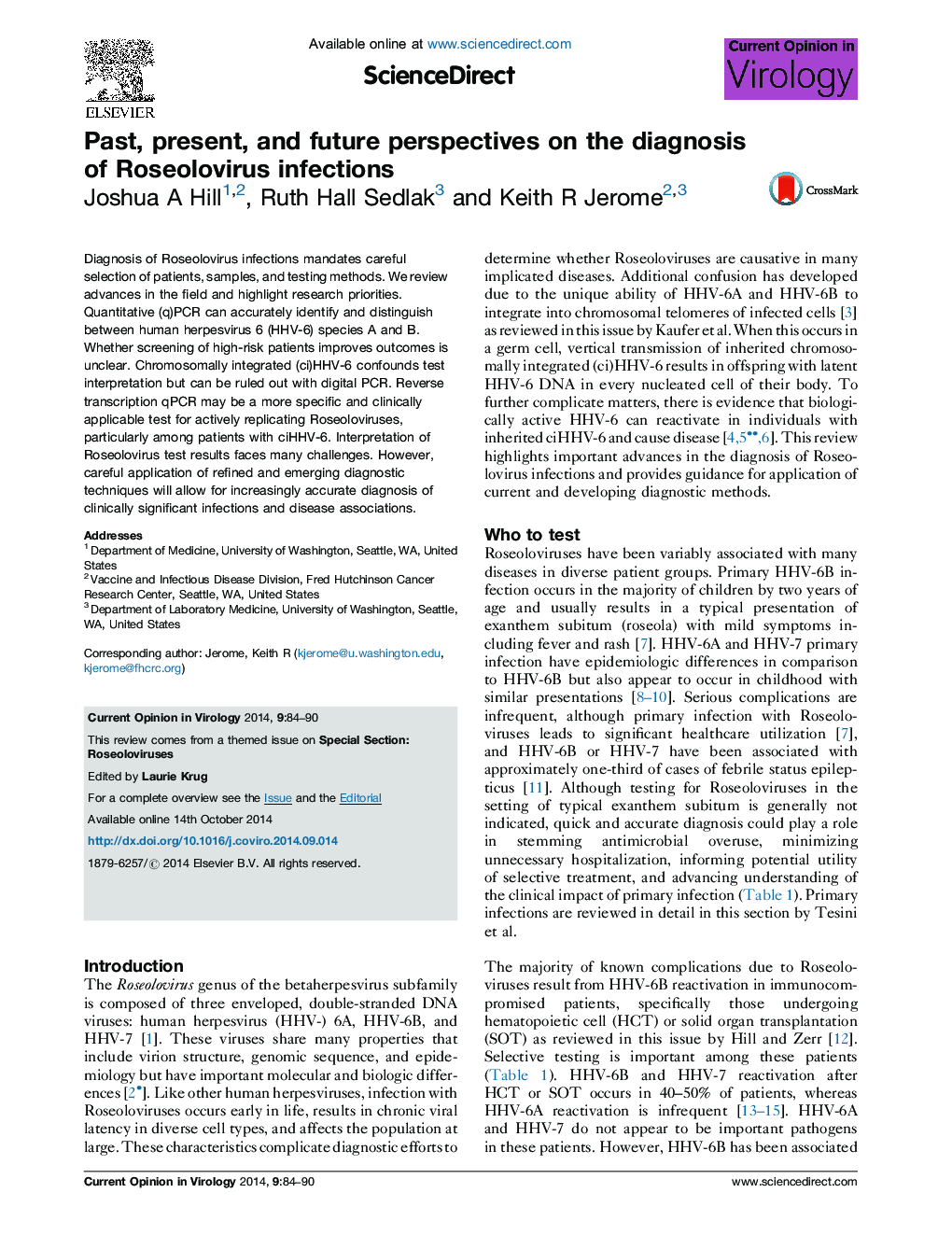| Article ID | Journal | Published Year | Pages | File Type |
|---|---|---|---|---|
| 2473334 | Current Opinion in Virology | 2014 | 7 Pages |
•Roseolovirus testing requires careful patient, sample, and method selection.•Test interpretation must account for detection of latent or integrated virus.•PCR methods for DNA and RNA detection require standardization and optimization.•Immunologic and tissue studies will help define the significance of Roseoloviruses.
Diagnosis of Roseolovirus infections mandates careful selection of patients, samples, and testing methods. We review advances in the field and highlight research priorities. Quantitative (q)PCR can accurately identify and distinguish between human herpesvirus 6 (HHV-6) species A and B. Whether screening of high-risk patients improves outcomes is unclear. Chromosomally integrated (ci)HHV-6 confounds test interpretation but can be ruled out with digital PCR. Reverse transcription qPCR may be a more specific and clinically applicable test for actively replicating Roseoloviruses, particularly among patients with ciHHV-6. Interpretation of Roseolovirus test results faces many challenges. However, careful application of refined and emerging diagnostic techniques will allow for increasingly accurate diagnosis of clinically significant infections and disease associations.
